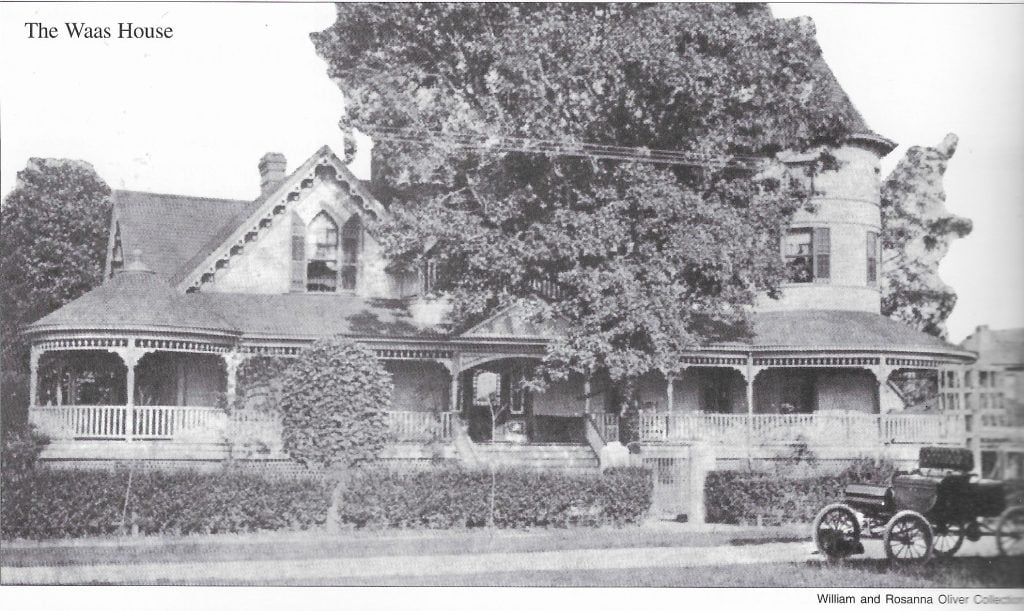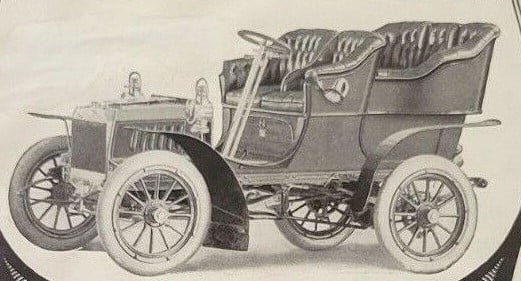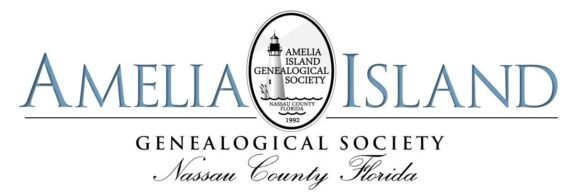
Did the linguist in you know that there was such a word as “automobubbling?” How about the musician in you? Vincent Bryan and Gus Edwards teamed up to write a song in 1905 called “In My Merry Oldsmobile.” Put to sound by Bill Murray, no, not that Bill Murray, this Bill Murray, it became the most popular of the early 20th century songs written about cars.
Just imagine, as Nassau County entered the 20th century, the preferred mode of transportation over land was by horseback or horse and buggy. It wasn’t until 1906 that Nassau County had its first registered horseless carriage. These early automobiles known as runabouts were called “horseless carriages” when they were first seen by townsfolks. Runabouts were basic with no doors, roof, or windshield. They had an engine situated under the seat, powered by gasoline or electricity. The popular models during that time such as Oldsmobile curved-dash, Model A Ford (Fordmobile) and Locomobile models followed the runabout design. Over time, the term “runabout” became synonymous with “roadster.”
The honor of registering the first automobile in Nassau County goes to Dr. William Theodore Waas, who registered his 4.5 horsepower Oldsmobile runabout with the State of Florida on 9 April 1906. Theo. paid the $2 fee to the Florida Secretary of State and in return the Secretary issued a motor vehicle registration certificate, the number of which, 213, was to be displayed on a tag, and placed on the rear of the runabout. How that tag was created was the choice of Theo, but most early homemade tags were created from leather, tin, or wood. It wasn’t until 1928 that Florida issued the first uniform license plate made from steel and manufactured at the Union Correctional Institution in Raiford.

Theo was a proud owner of an Oldsmobile Curved-Dash runabout, one of the most popular models sold by Oldsmobile between 1902 and 1905, and branded the “cheapest reliable automobile in the world” by its manufacturer. We can tell it was the Curved-Dash runabout by the size of the engine in Theo’s registration record, a 4.5 HP. This car had one cylinder, one piston, one connecting rod and crank, one balance wheel, and two valves. It was simple on purpose.
The story behind the development of the horseless carriage by Ransom Eli Olds is an often overlooked facet of automobile history. Olds founded his Olds Motor works in 1897 and started experimenting with various versions of cars. In 1898 with a few cars to show off, Olds secured enough funding from lumber magnet Samuel Smith to begin prototyping in earnest. Building a factory in Detroit he set to work developing additional cars until he had 11 different prototypes built. Which one would he decide to manufacture? That answer came on 9 March 1901 when a fire burned his entire factory, and surreptitiously, the only surviving car was the little Curved Dash runabout rescued by fleeing workers. One surviving building was used by the company to produce 425 cars by the end of 1901. This assembly line production made Olds the first car manufacturer to mass produce vehicles powered by an internal combustion engine. The engine’s simplicity and the vehicle’s affordable $650 price made the Curved Dash runabout America’s first car produced in large numbers.
I imagine Theo loved nothing more than taking his new black with carmine red trim “sleigh” for a spin on Fernandina beaches (the Curved Dash got its shape from a sleigh). At the time, the roads here were primarily dirt and crushed shells, which could make for a bumpy ride for autos and wagons alike. Yet a ride on the beach would be smooth and Theo could push the “pedal to the metal” to reach the full potential of… 20 miles an hour! Yes, those on horseback got around Fernandina faster than did Dr. Waas. The runabout didn’t actually have a pedal either, it had a lever to control the two forward and one backward speeds. When he needed to slow down Theo would pull on the hand break, and he likely used this as a method to control his speed as he drove through Fernandina. The good doctor would maneuver the streets of Fernandina using a lever device known as a steering tiller, not a steering wheel. A similar device is still used on watercraft today. The open roof and minimal interior of the Curved-Dash runabout allowed him to fully immerse himself in the sights, sounds, and smells of the town. Well, with Pogie fishing still active, the smell in town might not have been such a good thing. But I digress. The simple, no-frills design of the car would make Theo feel connected to the road.
Theodore Waas was married to Theo, Theodosia that is. Theodosia Helen Heidt married Theodore Waas in Fernandina about 1888. Dr. Waas carried on a practice of physician for many years in Fernandina while the two Theo’s raised a family of four children: Regina Helen Waas born in 1888, Glyndon Heidt Waas born in 1890, Theodosia Waas born in 1902 and Kate Bogart Waas born in 1905. The cost to the Waas family for this new dang-fangled contraption was $650. One has to wonder what Theodosia thought of the machine and her husband’s expenditure? The first drive in their fathers runabout must have been an exciting experience for Theo’s older children. But they had to do it separately, as only 2 people could automobubble with it at a time. With four children, and living in a small town, a Dr.’s practice could not be incredibly lucrative. Yet, six months after registering the Oldsmobile, we find the second Nassau County registration was also made by Theo, this time for a tonneau from the Autocar Company of Ardmore, PA. Perhaps the Waas family was doing better than I thought, or maybe, with the practical guidance of Theodosia, an additional purchase was made for the benefit of the whole family?
It’s hard to tell from the description of the engine size registered which model of the tonneau Theo purchased, since 14 HP is not standard for any of the Autocar models, yet that is what was recorded in the register. Since the Type VIII two cylinder came standard with 12 HP and the Type XI (the next available tonneau model) came with options for 16-20 HP I have to believe it was a two cylinder Type VIII, whose standard 12 HP version would have cost $1,400 in 1905, down from $1,600 in 1904. This theory is supported by two other Florida registrations which listed in their registration that the Model VIII had 12-14 HP versions. Apparently the doctor bought only the best for his family! The tonneau was a family car since it could seat 4 adults, and with such a young family I can see them all fitting on its seats. The Florida Secretary of State assigned this auto the registration number of 264. That the Waas family owned two of those 264 autos is quite impressive!

The third auto registered by Theo was in 1908 and here he purchased a Buick runabout, likely replacing his earlier one. Having 16 HP this runabout would finally get Theo through the town of Fernandina in record time as he visited the sickly on his rounds, something doctors still did back then. The registration number for this one was recorded as 625.
As you can see, one volume of the Florida Automobile Registration Records gives us a glimpse into one Amelia Island’s family automobile ownership over a period of 8 years. But these volumes also give us a peek into the community at the time. There were 21 autos registered within Nassau County by 1912, 32 by 1916. The names of their owners were representative of the Nassau communities at that time: Bacon, Bailey, Bennett, Bryce, Burn, Clare, Conner, Davis, Ground, Hirth, Horsey, Hoyt, Keen, MacDonnell, Mann, Mizell, Reynolds, Simmons, Swain, and of course, Waas.
Back to that linguist in me. In 1905, “In My Merry Oldsmobile” was a popular waltz song, and it referred to the joy of driving an Oldsmobile automobile. The term “automobubbling” was likely used by Vincent Bryan as a playful and lighthearted reference to the excitement of driving an automobile. The waltz was written at a time when automobiles were still a relatively new invention, and it captured the sense of freedom and adventure that people felt when they got behind the “wheel” of one of these new machines. It was a celebration of a new mode of transportation and a new way of experiencing the world. While the ride through Fernandina could be bumpy at times, I imagine that Theo felt a sense of freedom and adventure automobubbling in his merry Oldsmobile. Don’t you?
In My Merry Oldsmobile
Words by Vincent Bryan
Music by Gus Edwards
Young Johnnie Steele has an Oldsmobile,
He loves a dear little girl,
She is the queen of his gas machine,
She has his heart in a whirl.Now, when they go for a spin, you know,
She tries to learn the auto so
He lets her steer while he gets her ear,
And whispers soft and low:Come away with me, Lucille,
In my merry Oldsmobile,
Down the road of life we’ll fly,
Automobubbling, you and I.To the church we’ll swiftly steal,
Then our wedding bells will peal,
You can go as far as you like with me
In my merry Oldsmobile.They love to spark in the dark old park
As they go flying along
She says she knows why the motor goes
The sparker’s awfully strongEach day they spoon to the engine’s tune
Their honeymoon will happen soon
He’ll win Lucille with his Oldsmobile
And then he’ll fondly croon:Come away with me, Lucille,
In my merry Oldsmobile,
Down the road of life we’ll fly,
Automobubbling, you and I.To the church we’ll swiftly steal,
Then our wedding bells will peal,
You can go as far as you like with me
In my merry Oldsmobile.

